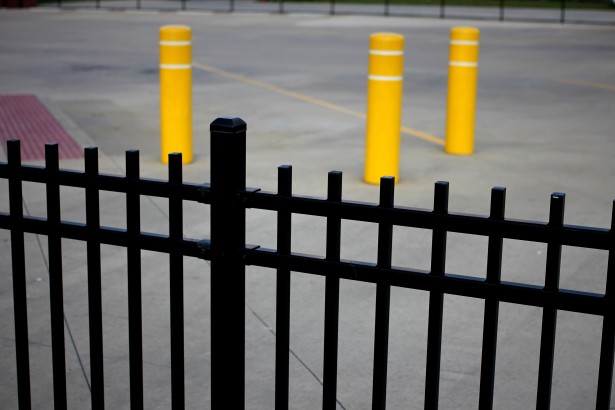
How to Design Better Bollards
Bollards aren’t strictly speaking a fence, but they are a great way to keep vehicle traffic away from sensitive areas and protect equipment from vehicle damage.
Many parts of the world will have regulations about how your bollards need to be designed, but there are a few things everyone can do to design better bollards. Here are some tips to make your bollards more effective and more visible.
How Tall Should Bollards Be?
There’s no cast-in-stone rule that says bollards need to be a specific height (at least, not a global one – there might very well be one in your area or city!)
However, the general rule is that you want to be able to see over your bollards easily but also make them as visible as possible. Usually, this means bollards should ideally be somewhere between about 900mm or three feet and 1200mm or 4 feet above the ground.
How Far Should Bollards Go Into the Ground?
When it comes to the strength of your bollards, it’s not only about the material you choose and how far the bollard extends above the ground but also how far they go into the ground.
Generally, you should consider the type of traffic you’re trying to prevent from accessing the area. Ordinary passenger vehicles driving at low speeds won’t create as much force as larger commercial vehicles. Bollards that are installed for security purposes, at airports, government buildings and so on generally also need to withstand more impact.
While the depth of your bollard really does depend on so many factors, we’d recommend that, again, this dimension should be at least 900mm or three feet to about 1200mm or four feet. Of course, if you want to go deeper, that’s also fine!
Add Lateral Stabilizers
If you are designing bollards for an area where they will have to stand up to heavier vehicles that might be moving faster, it’s a good idea to add lateral stabilizers of some kind to the bottom of your bollards.
These could be anything from a plate welded to the bottom of the bollard to several bars or bolts through the bottom of the bollard.
When installed in concrete, these lateral stabilizers make it harder for the bollard to be moved out of position when it is subjected to forces, which ultimately helps it to do its job.
Bright Colors and Reflectors
Another very important thing you can do to improve the design of your bollards is to make them as visible as possible.
Bollards are a great way to protect sensitive areas or equipment from vehicle damage, but they can also do a lot of damage to vehicles while they’re doing their job!
There are several ways you can make your bollards more visible to drivers:
- Paint them bright colors
- Use bollard covers in bright colors
- Paint them with glow-in-the-dark paint, so they are more visible at night
- Add reflectors or reflective tape to the bollard
- If you have somewhere to attach a sign, a sign that says something like “Beware: bollards” could also make drivers more cautious
Preventing vehicles from accidentally hitting your bollards not only helps to prevent angry drivers, but it also means you don’t have to replace your bollards as often.
Fill With concrete
If you are installing fixed bollards that are made from steel pipe, you can beef them up by filling the pipe with concrete. This adds strength and weight to the bollard, which makes it easier for it to protect sensitive areas or equipment.
A Great Alternative to Fencing
When we think of barriers, we tend to think of walls and fences, and they definitely have their place. However, sometimes, you don’t want to prevent all access to an area. You simply want to limit vehicle access or ensure that vehicles don’t hit an important structure or piece of equipment.
Bollards are the perfect solution. They still let people through, but they also provide some protection for the things you need to preserve.


